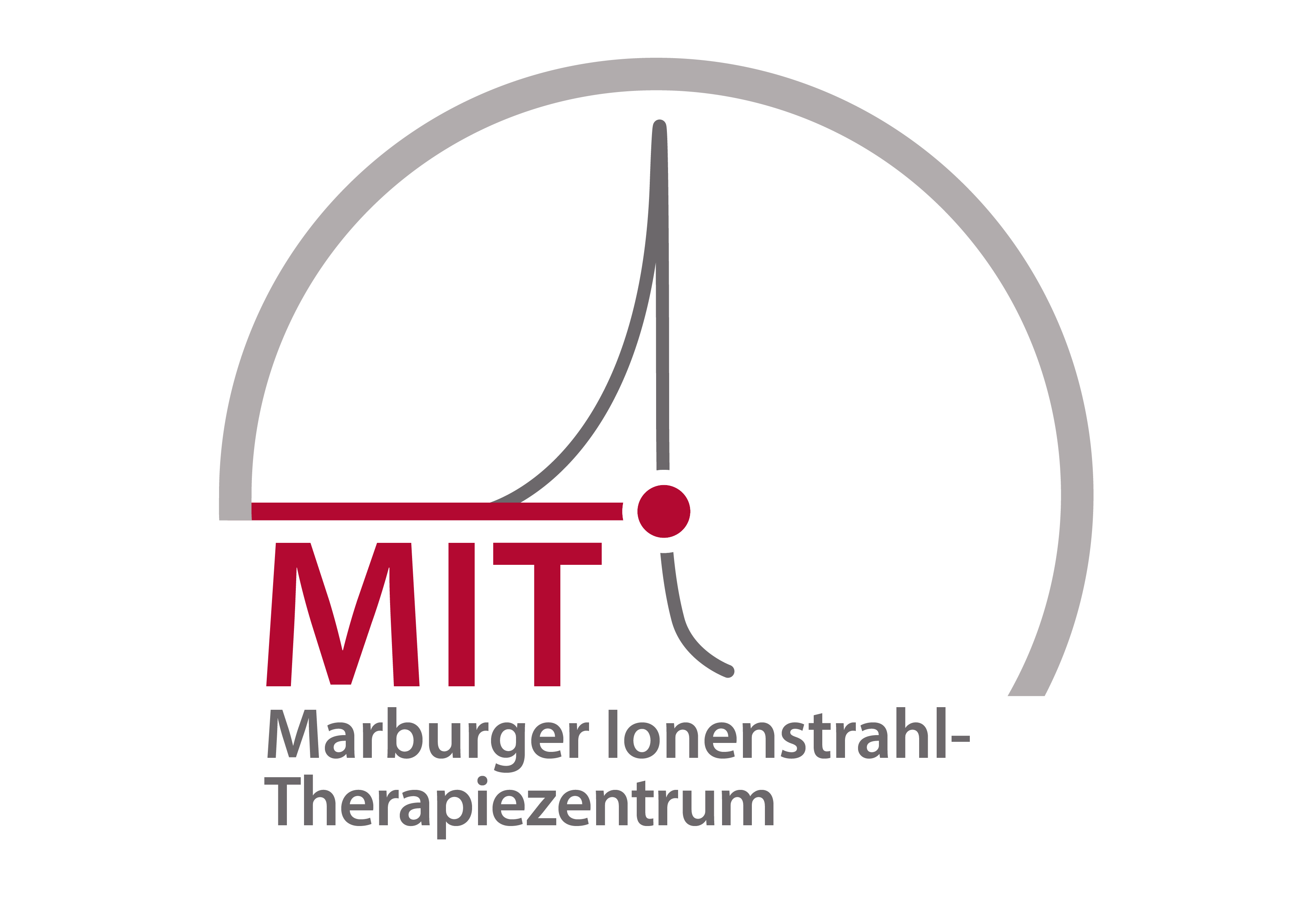
Process of particle therapy
Radiotherapy may only be successful when the therapy beam exactly targets the tumor. For this purpose, two important preconditions have to be fulfilled. First, the shape of the tumor has to be defined with highest accuracy and second, the patient has to be positioned exactly under the radiation source during treatment.
Imaging and therapy planning
Prior to irradiation, therapy planning takes place – it is performed based on most suitable imaging for the respective tumor entity. In to tomography of the CT, our physicians exactly register the tumor shape. According to the necessity, further imaging procedures have to be performed such as magnet resonance imaging (MRI) or positron emission tomography (PET). At the MIT, in general planning CT scans are made, further imaging procedures take place at the University Hospital of Giessen and Marburg.
Based on the tumor entity, the tumor size, and the location regarding neighboring organs, it is defined which dose shall reach the tumor and which dose must not be exceeded in the surrounding tissue. In addition, the exact therapy duration and the number of the single radiation sessions are defined.
Based on these data, our medical physics experts define an irradiation plan by means of a complex computer program. This process is called “three-dimensional computer-assisted radiotherapy planning”.
Positioning of the patient
During irradiation, the patients are usually in supine position on the treatment table. The robotic table can reliably be moved and rotated in all positions.
The challenge is that the patient has to be positioned during planning and each therapy session in exactly the same way on the radiation table. For this purpose, we work with positioning aids that are individually adjusted for each patient. Depending on the tumor location, these aids may be individually manufactured masks or vacuum mattresses.
The positioning is regularly checked before treatment by means of x-ray imaging. The robot pending from the ceiling moves the x-ray system to the patient and images are taken that are matched with the planning CT scans.
Single irradiations leading to tumor cell destruction
The decisive event is the destruction of the genetic material of the tumor cells, the so-called DNA. Finally, the cell does no longer divide or dies – the result is that the tumor does not grow any more or even decreases.
The therapy beam has to irreparably break the DNA of every single cancer cell. For this purpose, several sequential irradiations are necessary. The intervals are chosen in that way that the co-irradiated tissue may restore and repair radiation damages. Often, tumor cells are not able to do this. Thus, the radiation damages of the single radiations are summarized and the tumor is finally destroyed.
The entire radiation consists of an average of 20 single sessions. Several weeks after the irradiations, our physicians control the therapy outcome by means of CT scans or MRI, i.e. if the tumor has already decreased or even completely disappeared.


